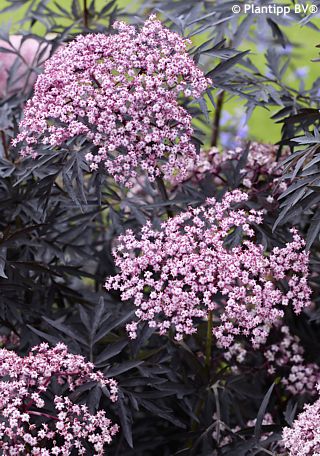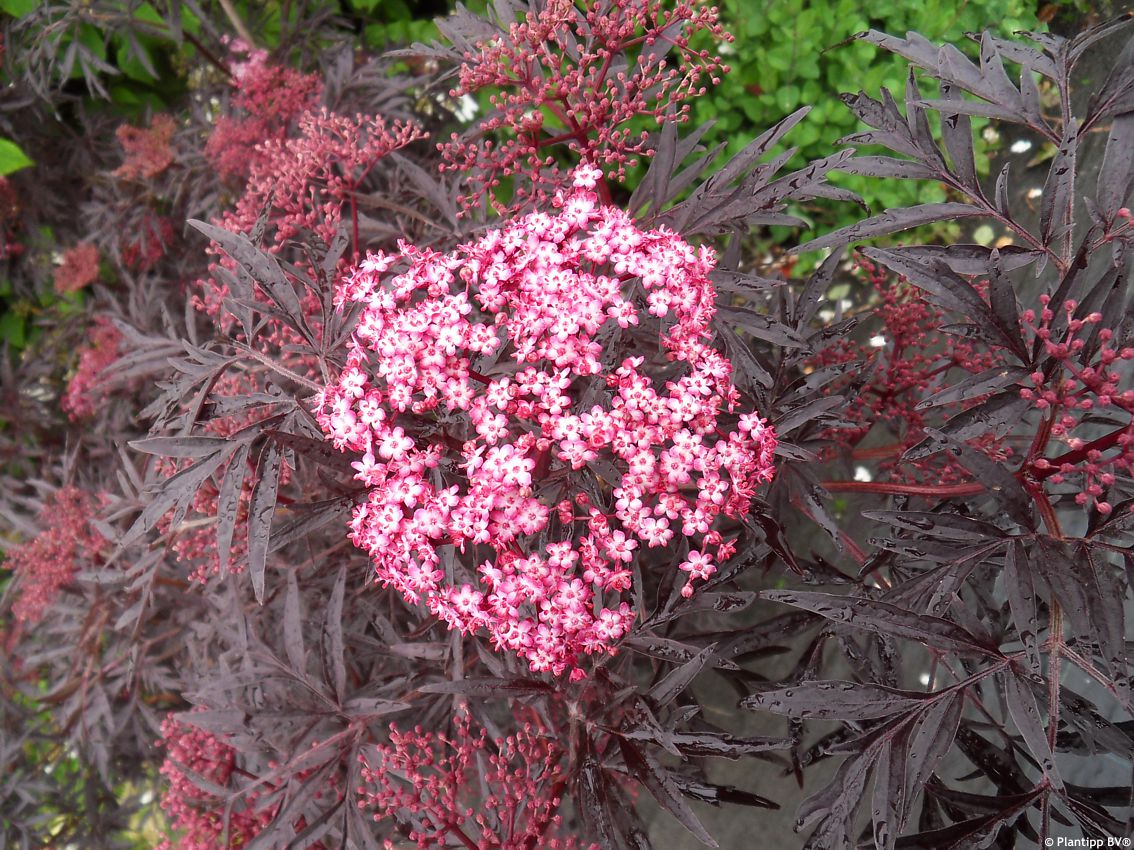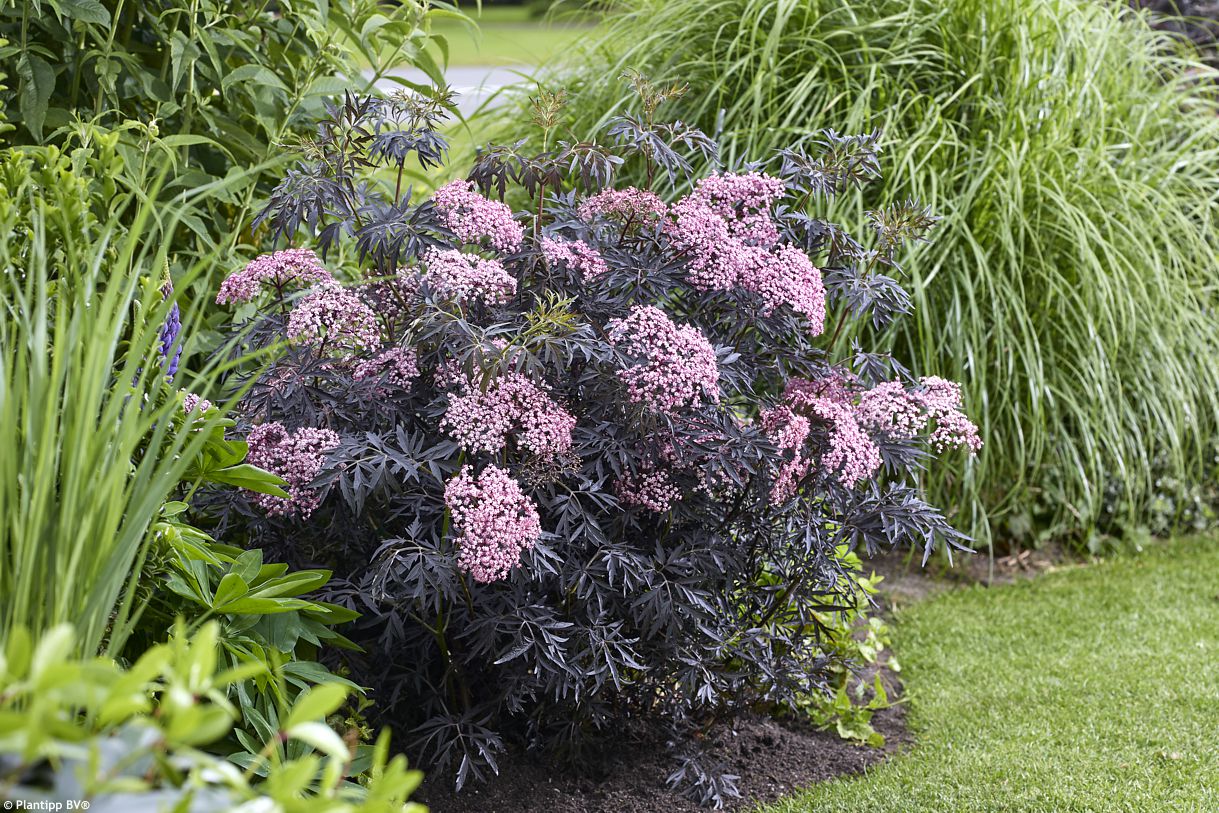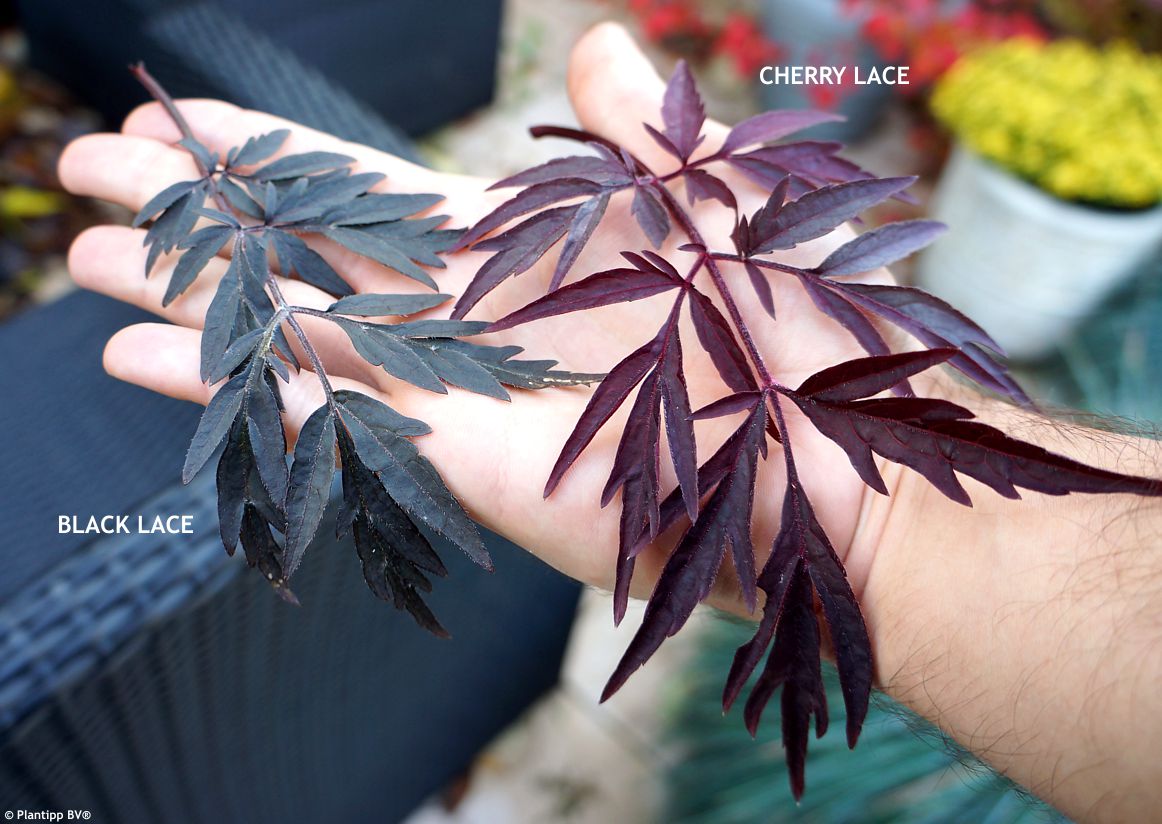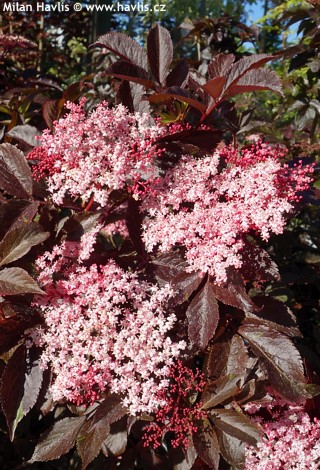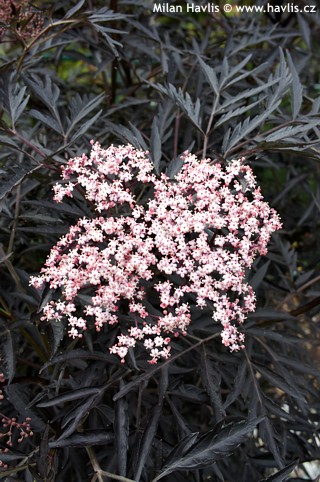Sambucus nigra 'Hyfjolais' CHERRY LACE European elder, elderberry


Sambucus
Aren’t the breeders crafty, I often say to myself. Take the European elder, for instance. This omnipresent shrub grows anywhere, without any maintenance, and the more you prune it, the thicker it gets. Well, what a promising start for cultivation, someone said. And here we are! So, forget about the common weed of our countryside and dive into the world of SAMBUCUS, a world of colours, shapes, and sizes that, given 10 different varieties, could well suffice for one complete garden.In elders with coloured foliage, it’s more often the leaves that make the plant desirable because they offer attractive texture and striking color. CHERRY LACE has pinnate leaves, deeply lobed, dark burgundy in spring with a strong red pigment similar to the Guincho Purple variety, which fades during flowering and the leaves darken to almost black. They are deciduous and plentiful, perfectly covering the entire shrub.
In youth, the shrub spreads more sideways and gains height with age. Although the adult size is not yet known, it is estimated to be a little less than the species – about 2 meters in height and width. It grows moderately fast and densely, yet it retains delicacy and fluffiness due to the deeply lobed leaves, making it a great choice for integration among large-leaved or otherwise massive shrubs, which it softens with its texture and offers a welcome contrast with its colour. It is great for informal, deciduous hedges composed of shrubs with coloured foliage. Its branches are brittle, rough to the touch, and fragrant like the whole shrub. The variety is protected by patents: 66516 (Europe – 2024) and PP35979 (USA – 2024).
Elder tolerates a wide range of soil types and will be happy in almost any location except for waterlogged areas. Its size can easily be controlled by early spring pruning. You can cut back anything from 1/3 to 2/3 of the previous year’s growth, but after hard pruning it will flower less. Older plants benefit from the removal of old branches in order to rejuvenate. It thrives in full sun but blooms profusely in partial shade as well. Fully hardy to about -34°C (USDA zone 4); however, it is not suitable for long-term container growing.
Last update 26-01-2025
Goods are shipped all over Europe. For Russia and U.K. and for further details please read about SHIPPING OPTIONS HERE.
Are you interested in a serious discount for orders NOV-FEB? Check your options here.
THE PRICES INCLUDE VAT of 15%. For quick conversion you can use 1 CZK = approx. 0.04 EUR
- STANDARD QUALITY - Plants of this group are 1st class quality with number of branches and overall density adequate to their size and age, considering they were container grown.
- DE LUXE QUALITY - This label guarantees a luxurious quality of manually selected plants that, compared to their height and age, are exceptionally dense and beautiful.
- EXTRA - These plants are usually mature and bigger specimens with exceptional overall appearance.
- STANDARD (as described in the plant form) means a tree with a trunk of 190-210 cm and a crown at the top, unless specified differently. The commercial size for trees is their girth measured in the height of 1m from ground.
- HOBBY - These plants are of the same quality as our standard-quality plants but younger and therefore cheaper.
- SHRUB - a woody plant with branches growing bushy from the ground level.
- HALF-STANDARD or MINI-STANDARD - a small tree with shorter trunk, its size is usually specified.
- FEATHERED - These are trees with branches growing already from the base of the trunk and up along the stem.
- GRASSES and PERENNIALS - Sizes given usually read the diameter of the pot or the clump, as specified.












